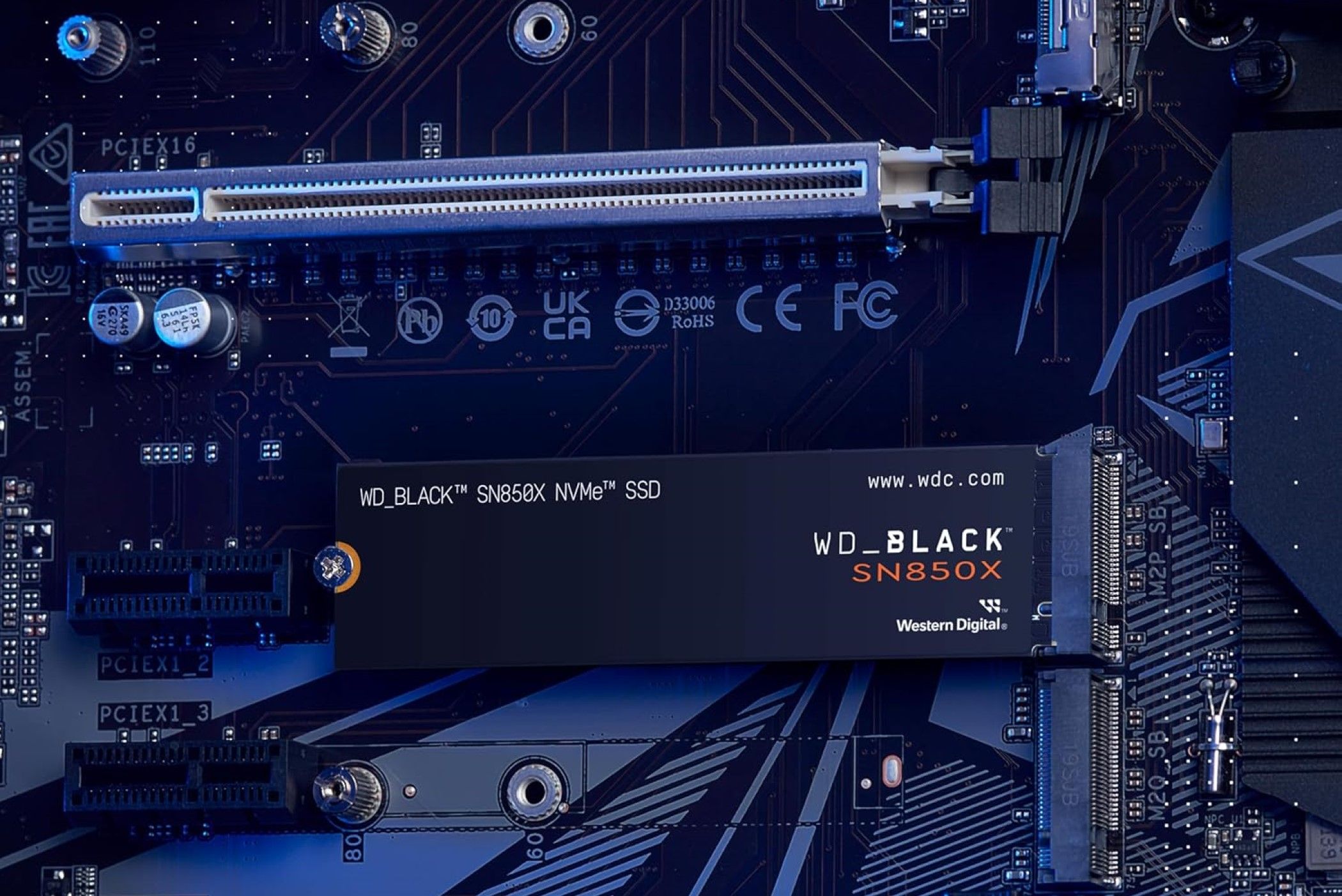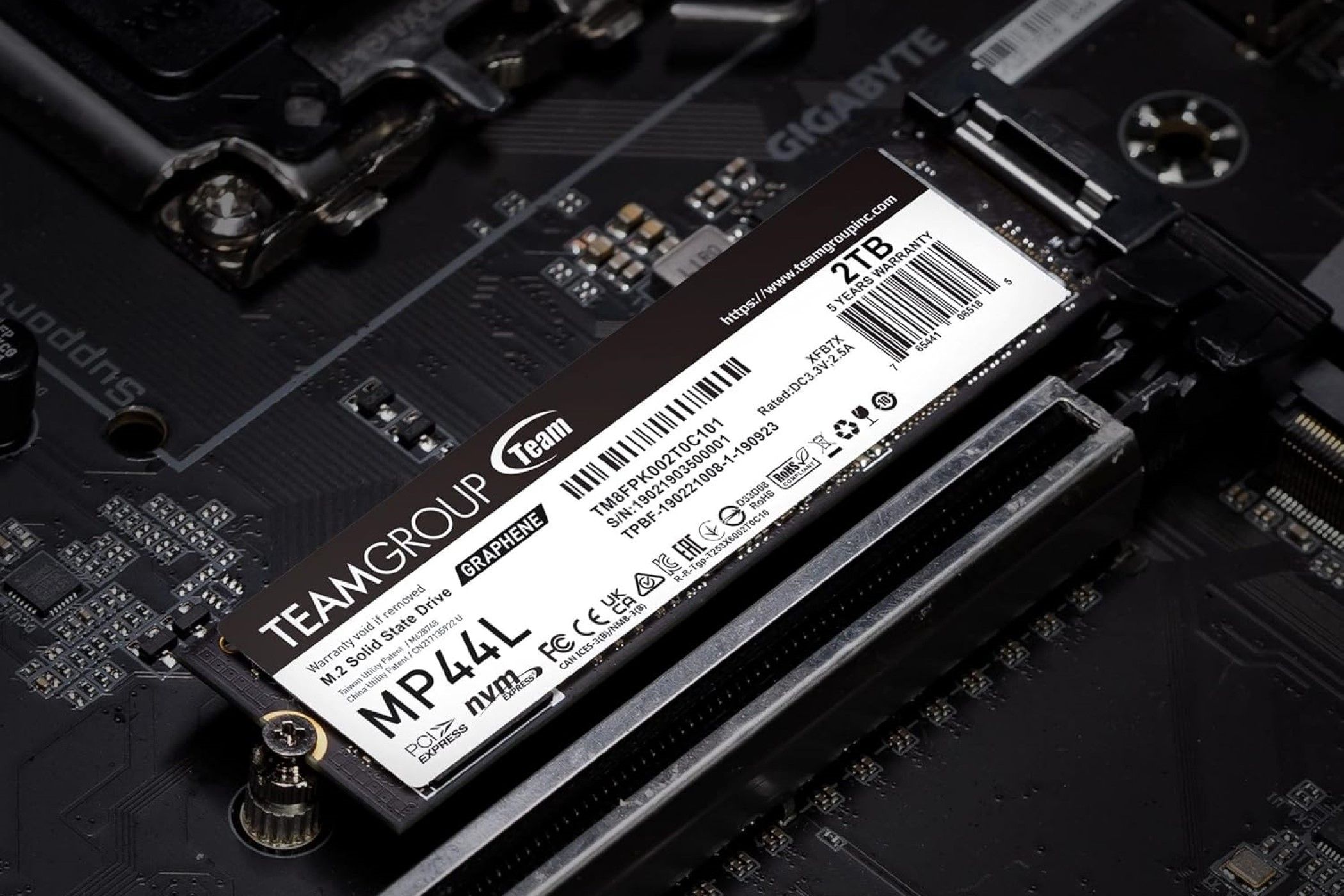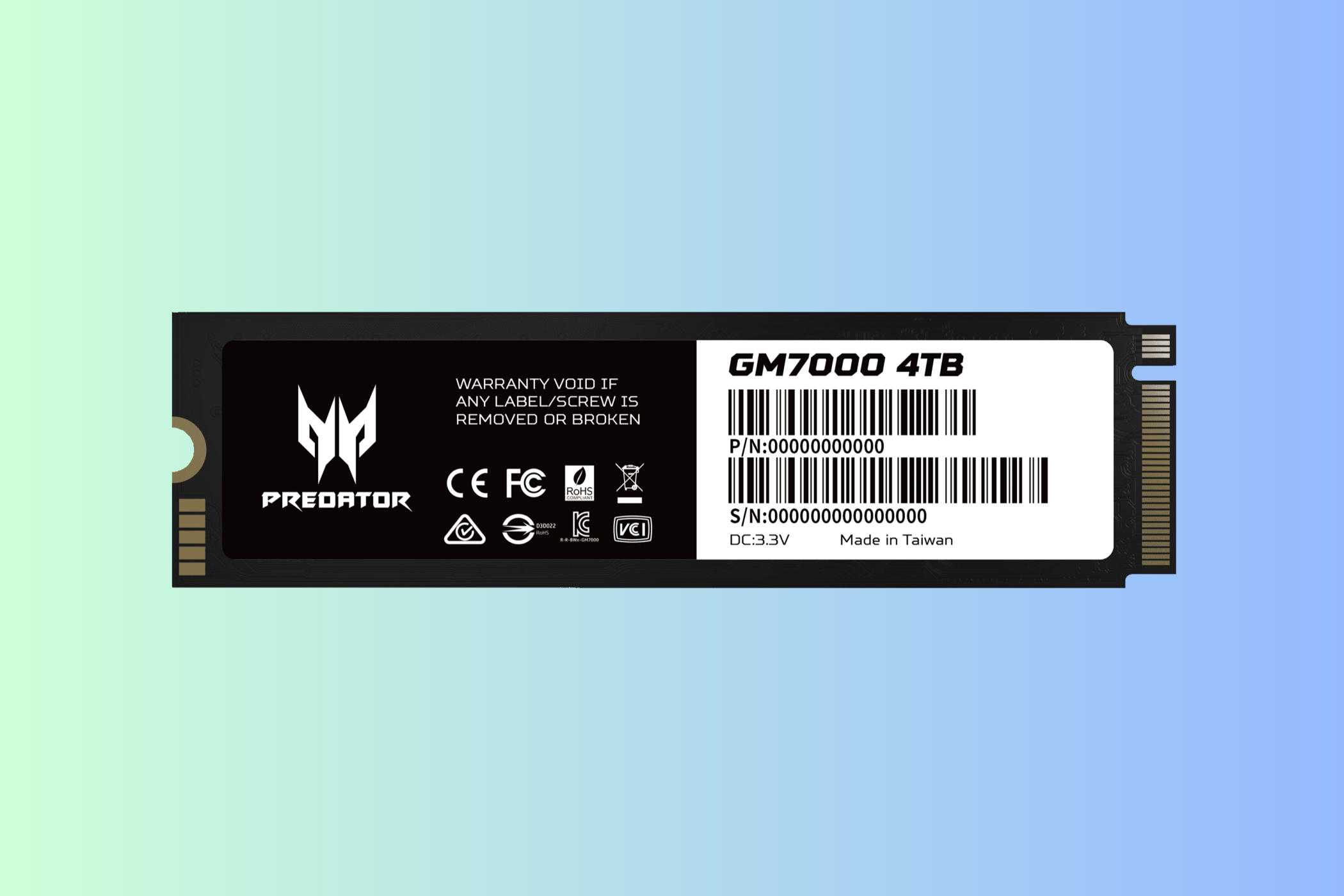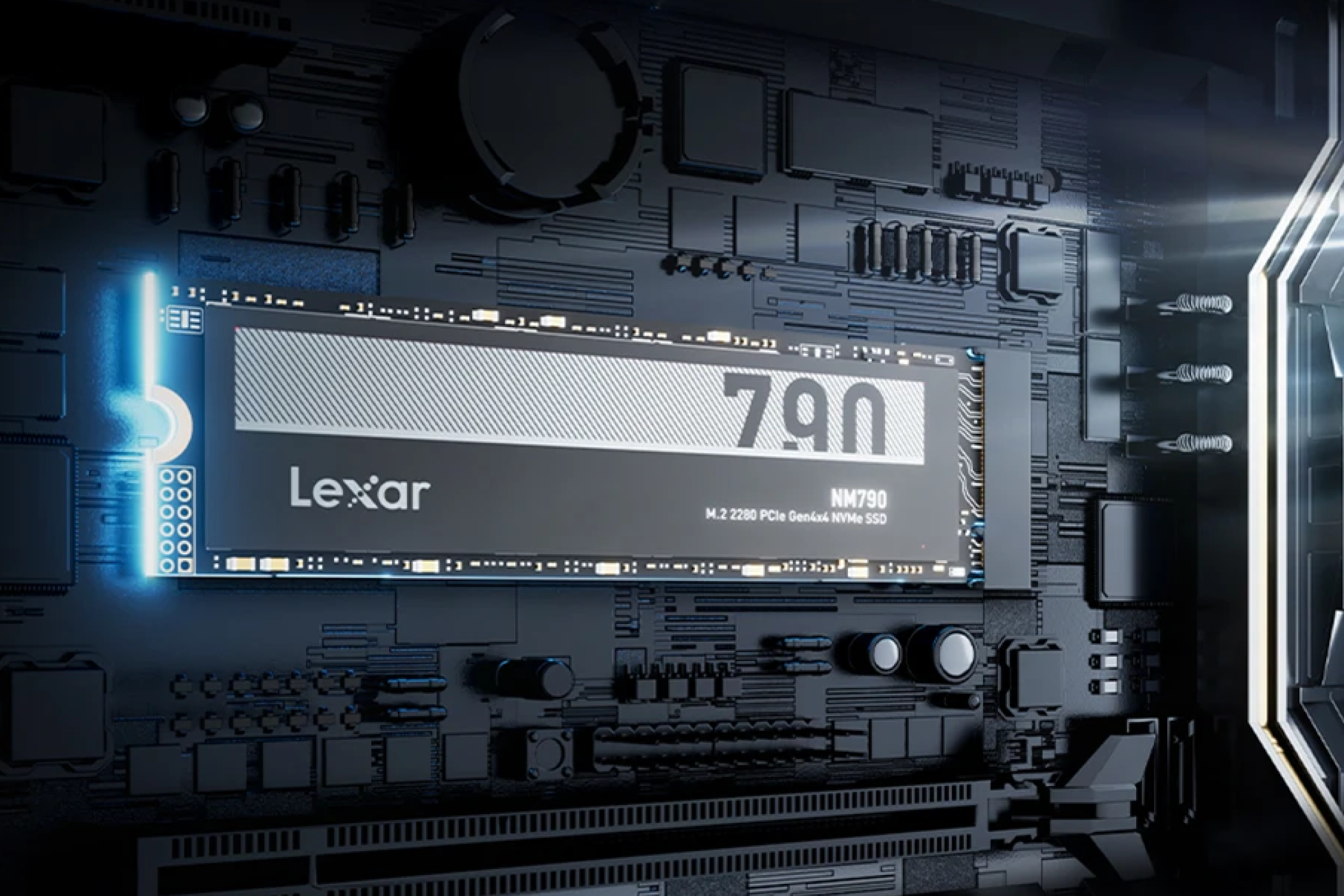A gaming SSD should offer blazing-fast speeds and lots of capacity to store modern AAA games that can easily break through the 100GB mark. There’s a ton of great SSDs that check all the gaming-related marks, so if you’re having trouble separating the SSD wheat from the chaff, let us help you.
The Most Important Aspects to Focus On When Buying an SSD for Gaming in 2024
Okay, let’s start this guide by answering the three most important questions when shopping for a new SSD you’ll use for gaming purposes: do I need a PCIe 5.0 SSD, are DRAMless SSDs good for gaming, and how much storage do I need?
The answer to the first question is no; you absolutely do not need a PCIe 5.0 SSD for gaming. I said this over a year ago, and haven’t changed my opinion since. PCIe 5.0 SSDs are still very expensive compared to PCIe 4.0 models, while not offering any real-world performance improvements. All they do is give you faster sequential read and write improvements that aren’t very important in real-world usage.
While loading games includes a lot of sequential readings, PCIe 5.0 speed improvements don’t translate to even an ounce faster loading times compared to the best PCIe 4.0 drives. In other words, buying a PCIe 5.0 SSD won’t result in faster loading times than PCIe 4.0 SSDs.
Further, the difference between PCIe 3.0 and PCIe 4.0 SSDs in-game loading is minimal. You’re looking at about a couple of seconds max unless we’re talking about NVMe SSDs featuring QLC flash, which tend to be slower and less durable than TLC flash—the most popular flavor of flash storage nowadays. I advise avoiding QLC SSDs since you can get TLC SSDs for virtually the same price.
If you’re going to use the SSD only for storing games, said SSD having DRAM or not doesn’t matter. A quality DRAMless SSD is almost as fast as models with a DRAM cache, and you can use it for storage but also as a boot drive. Moreover, recent budget SSDs without DRAM cache come with a tech called Host Memory Buffer (HMB), which reserves a tiny portion of system RAM and uses it as DRAM cache, resulting in more affordable SSDs that perform almost as fast as DRAM SSDs both in synthetic tests and real-life usage.
The only scenario where you can benefit from a DRAM cache is if you plan to use the SSD for a ton of writes, like if you do a lot of 4K video editing or run huge databases on your gaming PC. If you’re using your PC for regular stuff—gaming, browsing the web, content consumption, MS Office or Google Docs and Sheets, a bit of photo editing—you’ll be fine even with a DRAMless SSD.
Regarding the capacity sweet spot, I’d say that 2TB SSDs offer the most bang for the buck while also offering the right amount of capacity for most PC and PS5 gamers. Personally, I have 2TB of storage in my PC, and about two dozen games installed, many of them recent AAA titles, and I still have almost 650GB of free space. In other words, unless you want to have something like 30 or more games stored on your PC or PS5 at once, you’ll be fine with 2TB of storage. Oh, and if you’re buying an SSD for your PS5, make sure the SSD is compatible with PS5 and that it comes with a heatsink.
If you’re mulling over getting a PCIe SSD or saving some cash by opting for a SATA SSD, get the former if you have free M.2 SSD slots on your motherboard. Nowadays, budget NVMe PCIe 3.0 and PCIe 4.0 SSDs, which are much faster than SATA drives, cost virtually the same as SATA SSDs, so if you have free M.2 slots, get an NVMe drive.
Lastly, watch out for SSD models with different revisions, each with a different set of components. Sometimes manufacturers clearly label revisions that come with different components, but oftentimes, they do this under the table. Now, swapping components such as the controller and NAND flash memory used doesn’t have to affect performance, but in most cases it does, and in a negative way. The unfortunate truth is that most, if not all, SSD manufacturers have dabbled in this practice.
So, once you set your sights on an SSD, check whether it has been affected by component swapping before you pull the trigger. The most straightforward way is to just type the SSD model, follow it with “swapped components,” and perhaps add Reddit at the end of the queue. Also, TechPowerUp has a nifty SSD database that lists different sets of components for an SSD that has had its components changed. To check the database, type the SSD model and follow it with “specs TechPowerUp.” Note that our recommendations do not feature multiple revisions with swapped components.
|
How Did We Research |
||
|
Models Evaluated |
Hours Researched |
Reviews Analyzed |
|
23 |
6 |
36 |
How-To Geek’s product recommendations come from the same team of experts that have helped people fix their gadgets over one billion times. We only recommend the best products based on our research and expertise. We never accept payment to endorse or review a product. Read More »
|
Pros |
Cons |
|---|---|
|
Competitive pricing |
Not the fastest PCIe 4.0 SSD out there |
|
Available in four capacities |
|
|
Excellent all-around performance |
|
|
Available everywhere |
|
|
There’s a variant with a heatsink |
The WD_BLACK SN850X isn’t the absolute fastest PCIe 4.0 out there, but it does feature excellent real-world performance, competitive pricing, and a huge SLC write cache. It’s also available in many different capacities, including 8TB, making it the best SSD for gaming for most PC gamers.
The SN850X is blazing fast (read and write speeds up to 7,300MB/s), reliable, and great for any role, not just as a game-storing drive, and you can get it virtually anywhere. If you’re purchasing it for your gaming PC, get the regular version, but if you’re buying it for PS5, get the heatsink model.
Another plus for the SN850X is that it goes on sale often. Wait for the 1TB version to go below $90 and the 2TB version to be available for $150 or less, and you’ll have a ton of space for less.
The Samsung 990 Pro is a bit faster but also much pricier. Personally, I’d only get the 2TB version, which sports a decent price. The SK Hynix Platinum P41 is another phenomenal SSD for PC gamers sporting a similar price to the SN850X. And if you want a PCIe 5.0 SSD, check out the Corsair MP700 Pro.
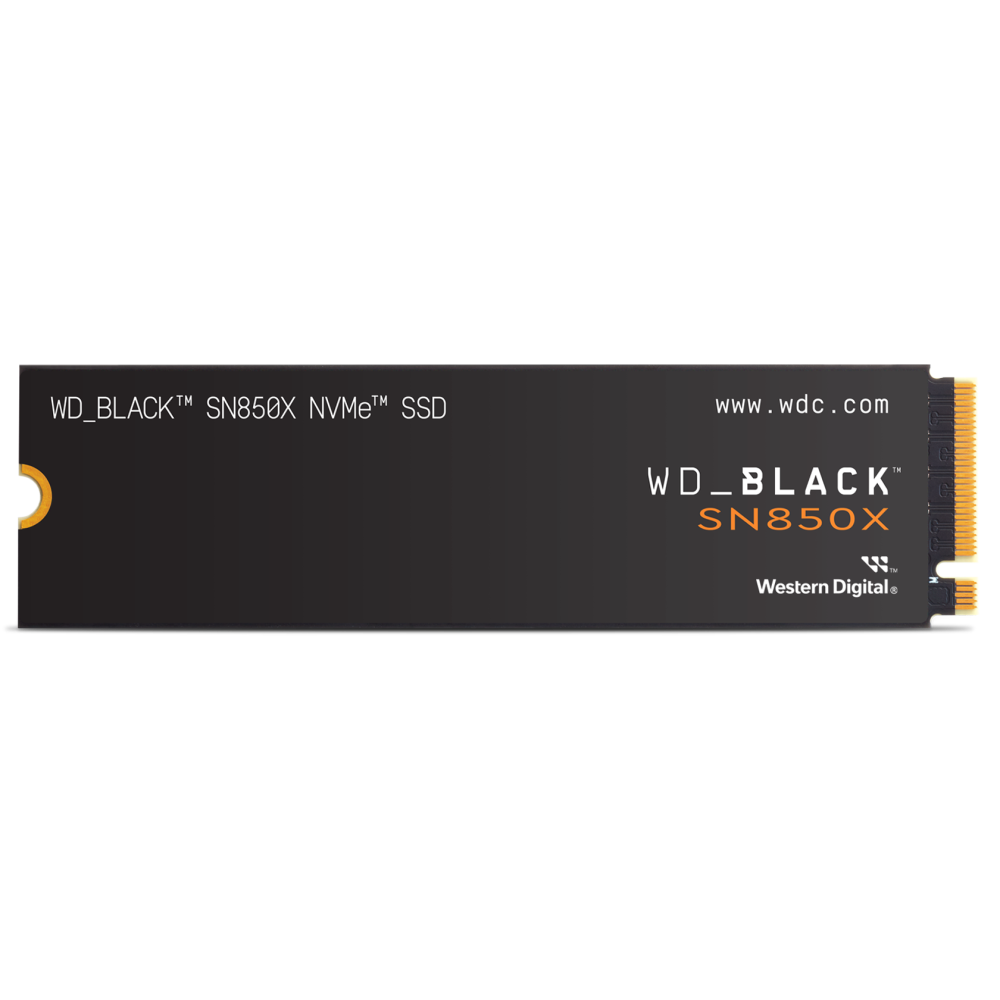

Best SSD for Gaming Overall
WD_BLACK SN850X
$134 $200 Save
$66
The WD_BLACK SN850X is a jack of all trades but also a master of a couple. Great performance, competitive price, and availability in four different storage capacities make it the best SSD for gaming out there.
|
Pros |
Cons |
|---|---|
|
Unbeatable price |
Not available in capacities higher than 2TB |
|
Tons of bang for your buck |
|
|
Good enough performance |
|
|
Doesn’t include different revisions with swapped components |
The MP44L from TEAMGROUP is a strikingly good budget SSD for gaming. The 1TB version costs less than $60 and rivals PCIe 3.0 and SATA SSDs while offering PCIe 4.0 performance stats.
It offers up to 5,000MB/s write and up to 4,500MB/s read speeds, excellent random read and write performance, a 5-year warranty, and doesn’t include different revisions featuring different internal components, which is often the case with budget SSDs.
You can get the MP44L in sizes ranging from 500GB to 2TB, with the latter costing about the same as 1TB high-end PCIe 4.0 SSDs while performing almost the same, making it the best option capacity-wise. The only major downside is that you cannot get the MP44L in sizes higher than 2TB.
The SSD market teems with great budget options. If you cannot find the MP44L, you can opt for something like the regular MP44, which comes in a 4TB flavor, or the Silicon Power US75, which costs about the same as the MP44L and performs very similarly.
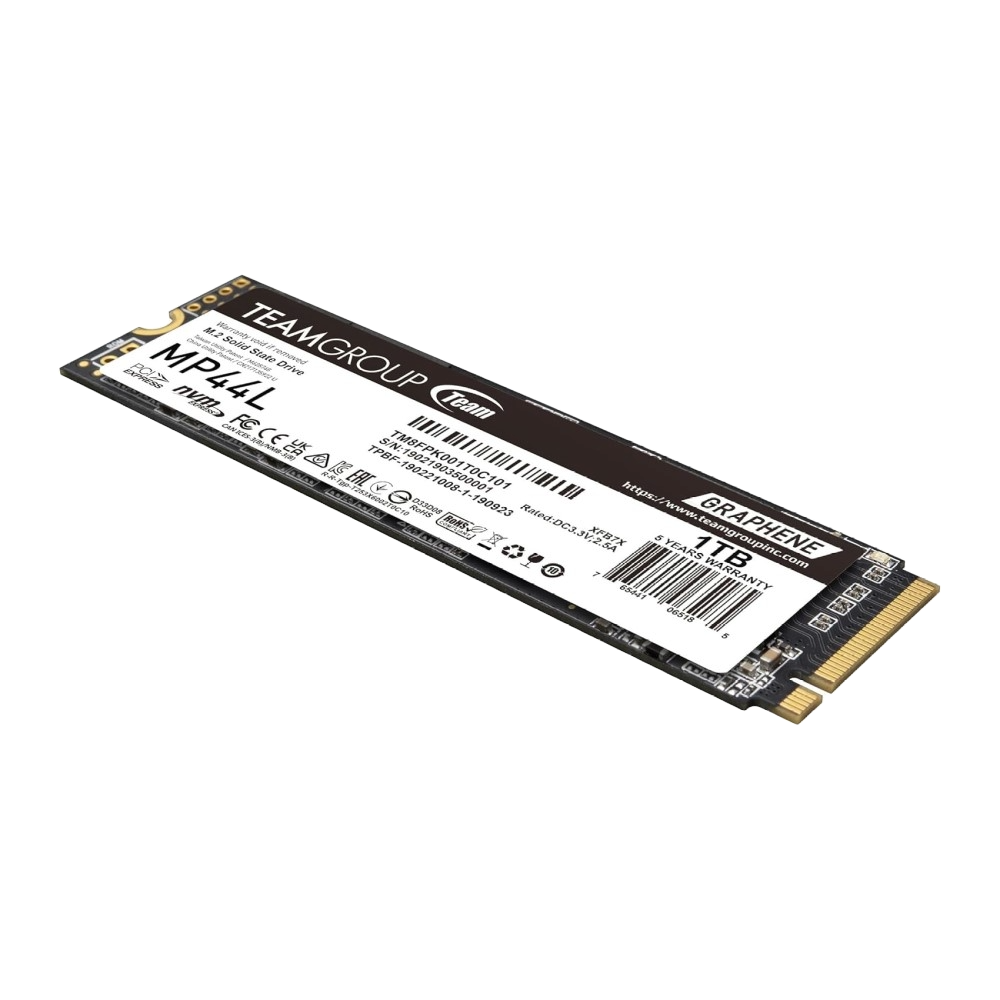

Best Budget SSD for Gaming
TEAMGROUP MP44L
$65 $82 Save
$17
Gamers on a budget looking for a speedy SSD should seriously consider the TEAMGROUP MP44L. The SSD offers tons of value and great performance for the price. If you need an SSD for storing games, you shouldn’t need anything faster than the MP44L.
|
Pros |
Cons |
|---|---|
|
One of the fastest PCIe 4.0 SSDs on the market |
Can thermal throttle under strenuous loads |
|
The 4TB and 2TB versions sport great prices |
|
|
DRAM cache |
|
|
Massive SLC cache |
Acer isn’t a company known for SSDs, but its Predator GM7000 is a fantastic product characterized by snappy performance, a large SLC cache, excellent durability, a DRAM cache, and a five-year warranty. The best thing about it is that the 4TB version comes at a great price, even when not on sale.
The 4TB version costs $269, noticeably lower than similarly performant SSDs. We also like the $125 price of the 2TB version, which is very much in line with what a budget PCIe 4.0 SSD might cost, making the Acer Predator GM7000 the best bang for the buck SSD in 2TB and 4TB sizes.
On the flip side, the 1TB model doesn’t wow with its price, and the GM7000 can thermal throttle under strenuous loads that include tons of writing, sequential or random.
If you’re looking for an alternative, the SN850X sells for a great price when on sale, and you can get it in an 8TB flavor, which is rare to see in consumer-grade SSDs. The ADATA Legend 960 Max is another 4TB SSD with a great base price, as is the TEAMGROUP MP44. If you want a bargain, get the Silicon Power US75, which costs just $210 for the 4TB version.
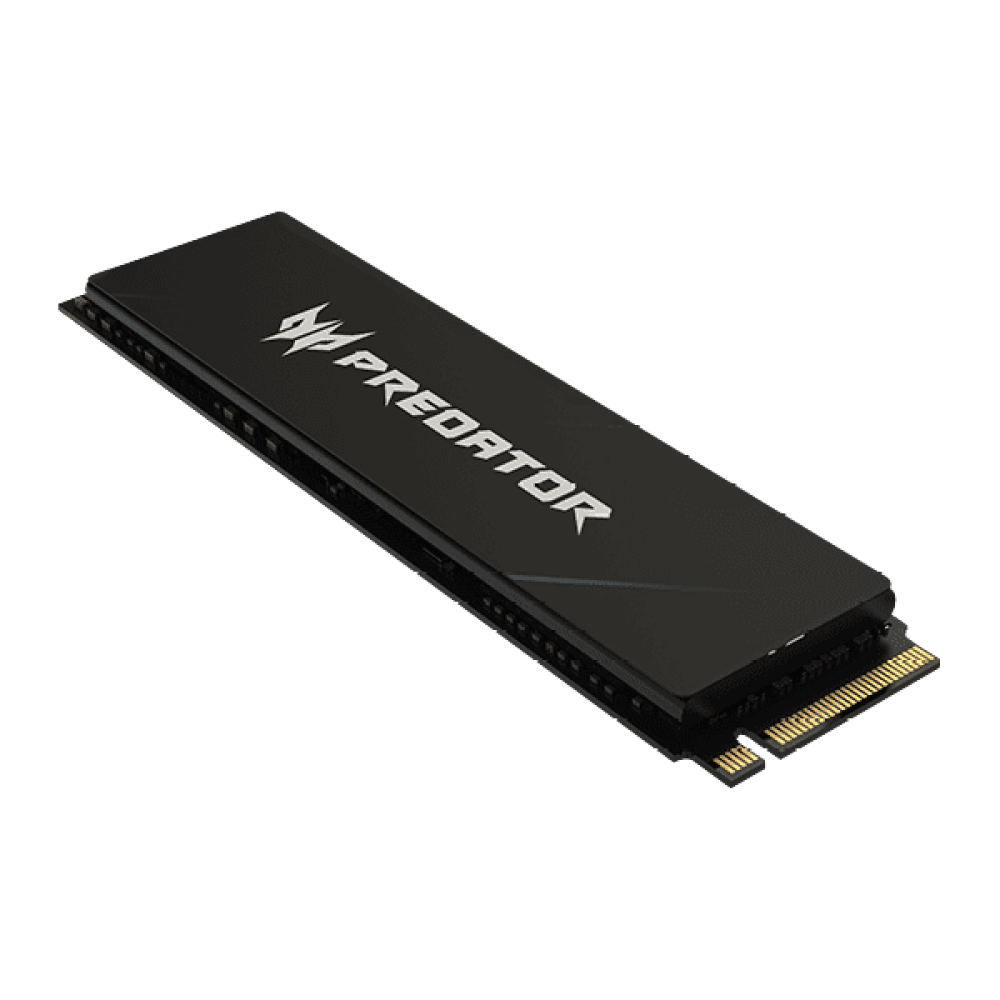

Best High-Capacity Gaming SSD
Acer Predator GM7000 4TB
$220 $270 Save
$50
When it comes to 4TB SSDs the Acer Predator GM7000 4TB offers the best price to performance ratio on the market. Speedy performance, DRAM cache, great price even when not on sale, and tons of storage space are reasons enough to recommend this SSD to PC and PS5 gamers in need of lots of fast SSD storage.
Best Gaming SSD for PS5: Lexar NM790
|
Pros |
Cons |
|---|---|
|
Comes with a heatsink |
No DRAM cache |
|
Blazing fast read and write speeds |
Not the most affordable PCIe 4.0 SSD on the market |
|
Perfect choice for a PS5 |
|
|
Available with up to 4TB of capacity |
The Lexar NM790 is a fantastic SSD for the PS5, offering a competitive price, a heatsink, and excellent value for the 2TB version. While you can use an SSD without a heatsink inside a PS5, having a heatsink is recommended to avoid thermal throttling.
Its performance aligns with what high-end PCIe 4.0 models can achieve, albeit without a DRAM cache (it does feature a Host Memory Buffer). That said, you don’t need a DRAM SSD for your PS5 since all you’ll use it for is storing games, making the NM790 an even better deal.
Now, the prices of the 1TB and 4TB versions could’ve been lower, but that’s about the only major issue we have with the NM790. If you want a more affordable 1TB SSD that performs almost the same, check out the Corsair MP600 PRO LPX.
If you’re looking for a 4TB SSD for your PS5, check out the WD_BLACK SN850X—just wait until it costs about $270 or lower. If you want to save some cash, the Silicon Power US75 is one of the most affordable SSDs compatible with the PS5, but it doesn’t come with a heatsink.
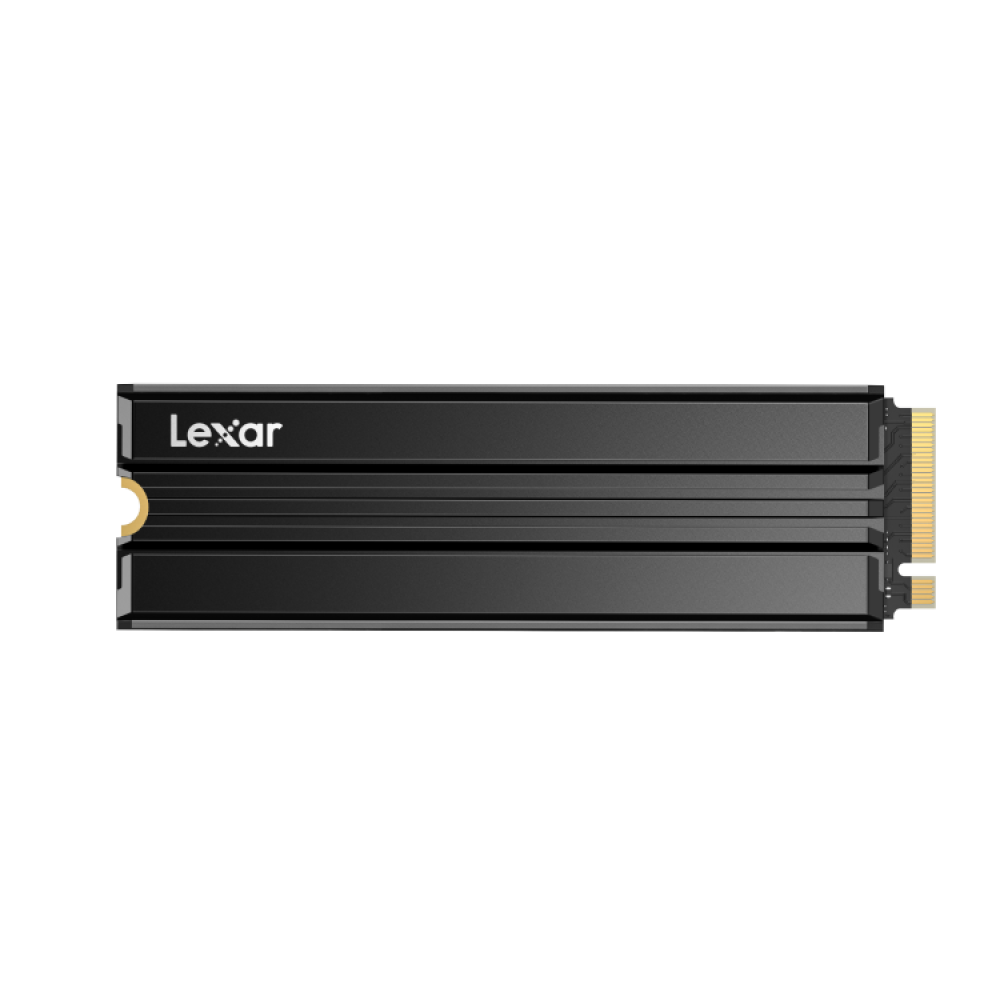

Best Gaming SSD for PS5
Lexar NM790 SSD
$118 $152 Save
$34
PS5 gamers looking for an SSD to expand their PS5 storage should take a look at the Lexar NM790. It comes with a heatsink, is more than fast enough for the PS5, and comes in a variety of capacities.
|
Pros |
Cons |
|---|---|
|
Slick design |
A bit pricey |
|
Excellent performance |
|
|
Shock resistant |
|
|
Compact |
Our last entry is the best external SSD for gaming. If you don’t own a motherboard with Thunderbolt 4 or USB 4 ports, get the Western Digital P40. The P40 looks great, supports read and write speeds up to 2,000MB/s if you’ve got a USB 3.2 Gen2x2 port, is very compact, and looks fantastic.
The outer shell features a slick industrial design, and you’re also getting a healthy dose of RGB. The metal housing isn’t just for looks since it allows the P40 to be shock-resistant, which is a nice bonus.
The drive is also compatible with PS5 and Xbox Series X and S consoles, but it can only store and play PS4 and Xbox One games. You can archive your PS5 and Xbox Series games on it, but you won’t be able to play them until you transfer them back to internal storage.
If you don’t care about the looks, the Kingston XS2000 costs less while offering the same performance and a smaller footprint. If your PC has USB 4 or Thunderbolt 3/4 connectivity, take a look at the ADATA SE920, which offers up to 3,800MB/s read speeds, but only via USB 4 and Thunderbolt 3/4. Lastly, if you’re looking for a budget option, the Crucial X9 is an excellent choice.
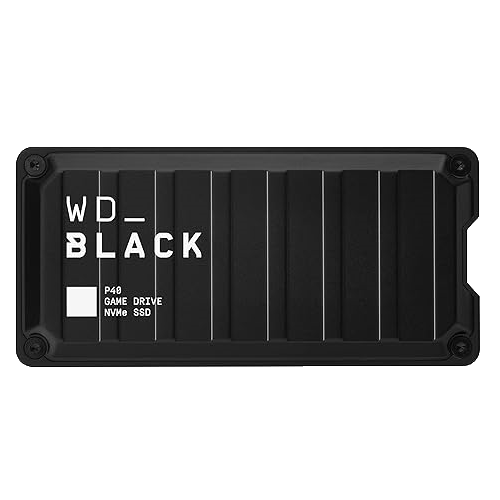

Best External SSD for Gaming
Western Digital P40 SSD
$100 $140 Save
$40
The Western Digital P40 SSD offers high-speed performance with up to 2,000 MB/s read speeds in a compact, portable design. Featuring RGB lighting and durable construction, it’s ideal for gamers needing fast and reliable external storage.
FAQ
What is a solid-state drive (SSD)?
A solid-state drive (SSD) is a storage drive based on NAND flash memory that doesn’t require electricity to retain data saved on it.
What is the difference between an SSD and HDD?
The most important difference is that SSDs are significantly faster than HDDs because they use flash memory instead of metal platters, which take much longer to access data stored on said platters. Next, SSDs do not have a single moving part, while HDDs are based on spinning metal platters and a moving actuator arm that accesses the data stored on the platters. Finally, while they have been seeing a constant decrease in price per GB over the years, SSDs are still pricier than HDDs, especially when it comes to larger capacities.
Can I install an SSD in my PS5?
Yes you can. Just make sure that the SSD has a heatsink. An SSD inside your PS5 can work without a heatsink, but it will be prone to thermal throttling when writing lots of files to it, e.g. when installing games.
Can my consoles read games from my external SSD?
Yes they can, as long as they are PS4 or Xbox One games. While you can store (archive) PS5 and Xbox Series games on an external SSD, you have to transfer them to internal storage to play them because not a single external SSD supports speeds required to be used for storing and playing PS5 and Xbox Series games.


